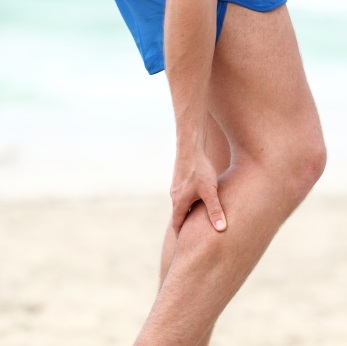Chronic Exertional Compartment Syndrome Causes, Symptoms, Diagnosis and Treatment

What Is Chronic Exertional Compartment Syndrome?
Chronic exertional compartment syndrome is an exercise-induced muscle and nerve condition that causes pain, swelling and sometimes even disability in affected muscles of legs or arms.
Anyone can develop chronic exertional compartment syndrome, but it’s more common in athletes who participate in sports that involve repetitive impact exercise.
If conservative treatment doesn’t help with chronic exertional compartment syndrome, the doctor may recommend surgery. Surgery is successful for many people; allowing the affected athletes to return to their sports.
Chronic exertional compartment syndrome isn’t a life-threatening condition and usually doesn’t cause any lasting or permanent damage if treatment is sought.
However, if one continues to exercise despite pain, the repeated increases in compartment pressure can lead to permanent numbness or weakness in affected muscles.
Causes Of Chronic Exertional Compartment Syndrome:
Chronic exertional compartment syndrome of the leg is a condition caused by exercise which results in increase tissue pressure within a limited fibro – osseous compartment – muscle size may increase by up to 20% during exercise.
When this happens pressure builds up in the tissues and muscles causing tissue ischemia. An increase in muscle weight will reduce the compartment volume of the surrounding fascial borders and resulting in an increase of intracompartmental pressure.
An increase in the pressure of the tissue can cause fluid to exude into the small spaces between the tissues known as interstitial space, leading to a disruption of the micro-circulation of the leg. This condition occurs commonly in the lower leg and various other locations within the body, such as the foot or forearm.
Risk Factors Of Chronic Exertional Compartment Syndrome:
- Age. The condition is most common in athletes under 30.
- Type of exercise. Exercise that involves repetitive impact activity — such as running or fast walking — increases risk of developing the condition.
- Overtraining. Working out too intensely or too frequently also can raise the risk of chronic exertional compartment syndrome.
- Certain drugs. Taking anabolic steroids or the supplement creatine may increase the water content and mass of a muscle segment, contributing to the development of chronic exertional compartment syndrome.
Symptoms Of Chronic Exertional Compartment Syndrome:
Signs and symptoms include:
- Aching, burning or cramping pain in the affected limb — usually the lower leg
- Tightness in the affected limb
- Numbness or tingling in the affected limb
- Weakness of the affected limb
- Foot drop, in severe cases, if nerves in legs are affected
- Occasionally, swelling or bulging as a result of a muscle hernia
Diagnosis Of Chronic Exertional Compartment Syndrome:
Diagnostic tests may include:
- Imaging tests
- Compartment pressure testing
Treatment Of Chronic Exertional Compartment Syndrome:
The following treatment options are available:
- Conservative options
pain medications,
stretching or strengthening regimens
orthotics
massage
a break from exercise
use of different biomechanical techniques - Surgical options
Fasciectomy
By : Natural Health News




